Kopi Luwak, Bakmi Goreng and cold Bintang: Memories of beautiful Bali
Sun kissed beaches, lush green rice terraces and sumptuous food -- Bali is full of exciting surprises for an intrepid traveller...
This was so not going to be fun, I told myself as I belted up. The flight attendant, her lips cherry red to match her fitted uniform, flashed her pearlies as she went about her business. Seat belt, check; seat upright, check; cellphone off, check. It was time to for our take off to Bali.
Beautiful Bali
At Denpasar airport, the immigration official greeted us. Selamat Datang. Welcome to Bali!
The moot point between the husband and yours truly was the choice of vacation destination. In my mind, Bali was just another beach party destination. Turned out I had been gypped. And how!
With Java to the west and Lombok to the east, Bali, formerly a Dutch colony, is one of Indonesia’s 33 provinces. The Hindu island in what is mostly a Muslim archipelago is the country’s biggest tourism draw – as commercial, as it is spiritual. And the jewel in this beautiful island’s crown is undoubtedly, Ubud.
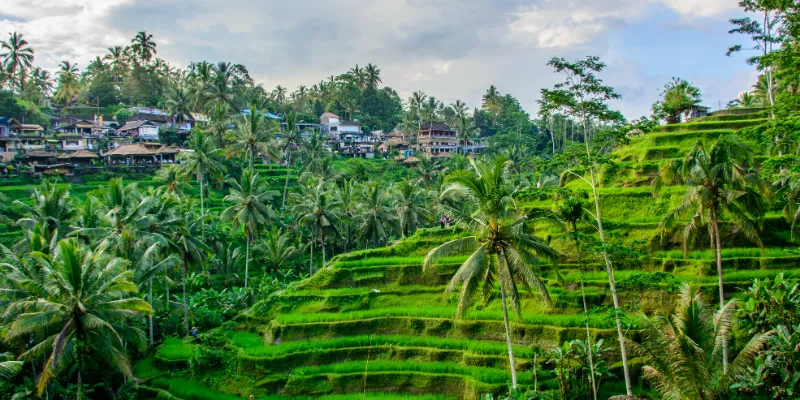
Ubud, Bali
Located about 35 km from Denpasar airport, Ubud – the cultural centre of Bali - is about 300m above sea level. Surrounded by lush green rice terraces, this town- situated in the hills leading up to the central mountainous region - is much cooler than other tourist destinations in Bali.
ALSO READ

Coffee and conversation
Over kopi luwak (a warning: one needs to develop a taste for this coffee), the hotel manager opens up. “Ubud gets its name from the Balinese word ubad (medicine),” she says. The town, with a population of about 8,000 people, was originally renowned as a source of medicinal herbs and plants.
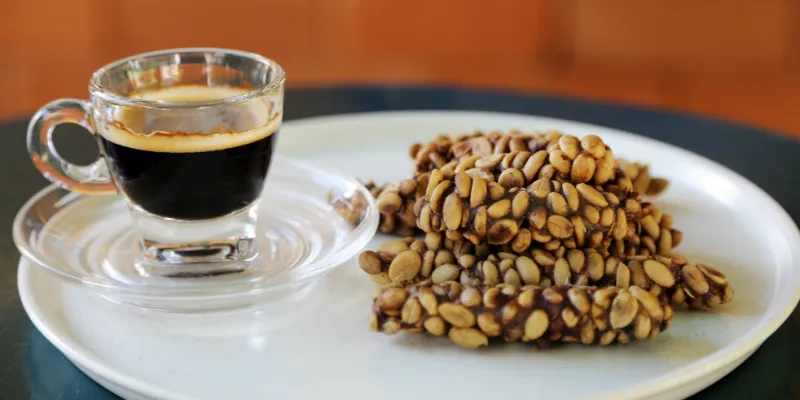
Kopi Luwak coffee
“You want party, fun, disco,” she tells me, “you go Kuta, Legian, Seminyak.” I shake my head, my expression conveying my horror. “If no,” she softens, “Ubud right choice.”
Tourism in Ubud revolves around the scenic rice fields, small villages, art and craft communities, ancient temples, palaces and rivers. And, most importantly, the people. People come here drawn by the arts and crafts. By the promise of learning to do things the Balinese way, be it painting, wood work, cooking or just viewing a traditional Balinese dance performance.
I’m so excited I can barely stand still. What should we do? Get a massage, take a cooking course, watch a Balinese dance performance, visit the craft villages. So much to do, so little time.
Food for thought
Cooking courses in Bali are mostly home-run enterprises. You sign up (your course could last from one day to five days) and learn to cook the Balinese way. I opt for a one-day course and decide to plan my own menu. Spiced Fish in Banana Leaves, Fragrant Tuna Curry, Onion and Tomato Sambal, Roasted White Eggplant, Bakmi Goreng for the husband, Nasi Goreng for me, to be followed by Fruit in Coconut Milk.
We’re already hungry. Time to head to the local market and buy ingredients. The cook looks at the fish, asks for fresher samples, grimaces over the state of the banana leaves, and digs deep into the basket of eggplants.
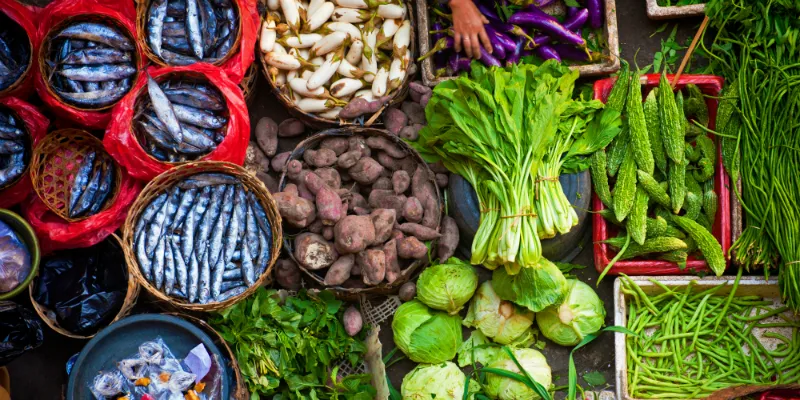
A local market
“Rice in India?” he asks. “We have lots,” I tell him, looking around the cornucopia of fresh fruits, vegetables and seafood. “In Bali, we have varieties of rice – red, white, black, purple,” says Boogie (he had a regular name, he says, but he switched to Boogie since it was easier for tourists). I look suitably impressed. “We even do glutinous and non-glutinous,” he adds.
Spiced fish, rice, sambal
Shopping done, it’s time to cook. I don an apron and help Boogie wash the vegetables and seafood. In Indonesia, he tells me, the main dish is usually served with a range of spicy side dishes and condiments. Sounds familiar? Soon, an enticing aroma wafts through the kitchen. Hell, have I helped create this!
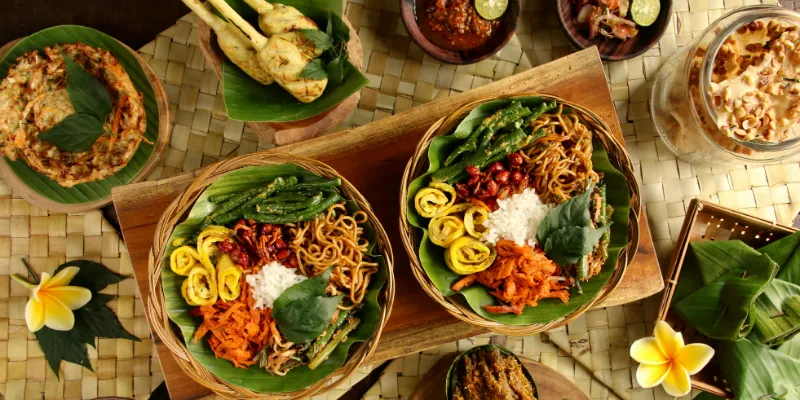
A Balinese meal
What a lunch it is! Accompanied by a glass of arak (the local brew, it’s definitely a must-try with lemon, honey and lots of ice), the Spiced Fish in Banana Leaves is tender and delicately flavoured. A hint of nutmeg in the spice mix is Boogie’s can’t-miss tip. The spicy sambal brings tears to the eyes, but it’s so got-to-eat-more that we end up making some more. The fruit salad with a twist – coconut milk – is the perfect ending to the meal.
The crafts scene
Replete, we decide to check out the crafts scene. The Sukawati art market, a 20-minute drive south of Ubud, is a treasure trove. Garuda and Barong statues, masks of all kinds, cane bags, shell lamps and coasters. This is the place to pick up souvenirs.
How much, I ask a woman showing me a carved statue. IDR 75,000, she says. IDR 60,000, she offers when she saw me readying to walk out. IDR 50,000, she screams desperately as I get into the car. I seal the deal at 30,000 Indonesian rupees. As they say, bargaining is a must in Bali.
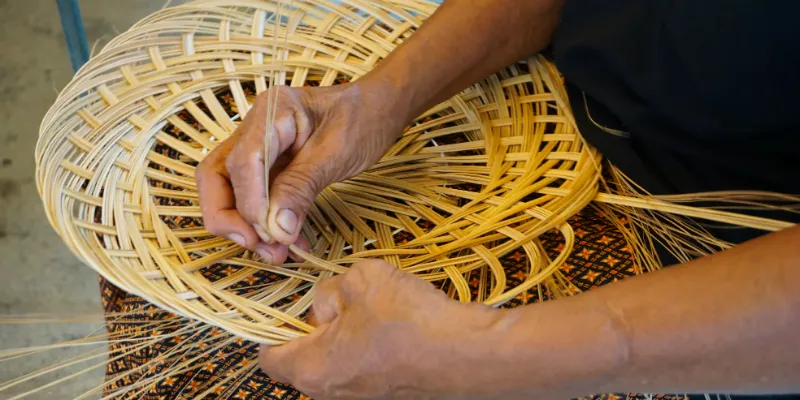
Basket making is one of the crafts in Bali
In the following days we visit other “craft towns” – for jewellery (Celuk), stone carving (Batubulan), basket making (Bona), bamboo and rattan work (Sakah and Bona), weaving and painting (Gianyar area), and bone and coconut carving (Tampaksiring) – and come back awed. If you have the time and the inclination, you can sign up for a course and pursue that desire to paint canvases or make baskets.
Let’s dance
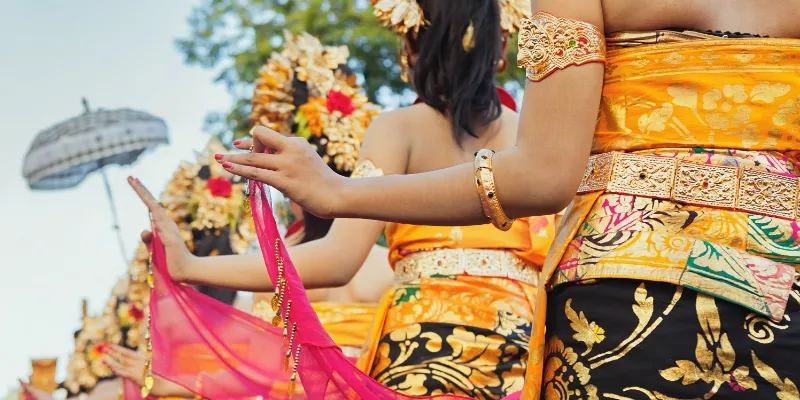
Young Balinese girls are known for their graceful dance moves
In Ubud, one has to enjoy a dance performance – be it Barong (a dance depicting a contest between chaos and order); Legong (a dance performed by young girls); Kecak (a ritual dance that combines the chorus of the "Sanghyang" trance dance with a story from the Ramayana), or the Fire dance (a dance to exorcise evil spirits). If you’re keen to learn, courses are offered at Ubud’s Foundation for Pure Art.
Sipping a cold Bintang (the local beer) on a hot day, I realise I’ve barely scratched the surface of Ubud. The real Ubud is not just the town; it’s the little streets and bylanes, the quaint kitchens and cafes, the workshops and craftsmen.
Culture and beauty
While most tropical destinations have succumbed to fun-seeking droves, Balinese culture has remained resilient.

Temples in Bali
In Bali’s party zone, cold drink and fake watch sellers harangue tourists by day and touts push sex and drugs (the use and ownership of narcotic drugs is punishable by death in Indonesia).
Yet, quaint customs continue. Each morning, young Balinese women make floral offerings to gods. The offerings are everywhere: in temples, at doorways, in shops, at restaurants. Tourism may have brought changes to Bali, as locals allege, but rituals are still alive.
Early next morning, it’s time to pick up some gifts. Organic soaps, jasmine and green tea scrubs, cane bags, and kopi luwak – we’re set to say good bye to this pleasure island.
Terima Kasih. Thank you, Bali!








